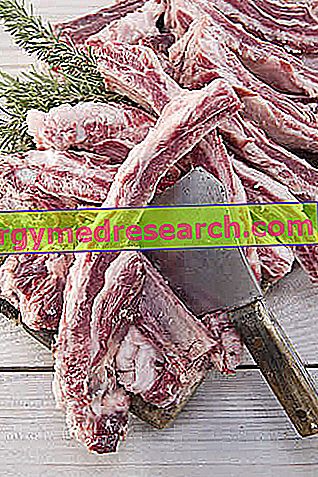What are dietary salts?
- SALT IODATE: the choice to add iodine to the common salt was taken to reduce the incidence of thyroid problems in the population. This mineral, contained mainly in algae, fish, turnips and spinach, is in fact essential for the synthesis of thyroid hormones. Its lack of nutrition can cause hypothyroidism (goiter) and the Italian diet is often poor.
Iodine indirectly intervenes in the regulation of basal metabolism, increasing it and favoring growth and development. The iodized salt must be used raw; it is useless to add it to the pasta during cooking as the high temperatures destroy this very important mineral.
- HYPOSODIC SALT: added to potassium chloride, it contains less sodium and helps fight hypertension.
- ASODIAL SALT: totally sodium-free (max 0.12%).
- INTEGRAL MARINE SALT: unlike the others it is a 100% natural salt that has not undergone any refining process. For this reason, the crystals contain important minerals such as iodine, magnesium, sulfur, zinc, copper, phosphorus, etc.
- GOMASIO: obtained by adding salt to toasted sesame seeds or to algae. Of oriental origin, but now widespread and also known in Europe, it can be used instead of traditional salt to dress salads or cereals.
Gomasio - What is it and how to prepare it
X Problems with video playback? Reload from YouTube Go to Video Page Go to Video Recipes Section Watch the video on youtubeIn any case, before venturing into the choice of a dietary salt, it is advisable to consult your doctor. The iodized salt, for example, could be contraindicated to those suffering from hyperthyroidism, the hyposodic one in case of heart or kidney pathologies. Both of these salts could also interfere with medicines taken to treat other diseases.
These indications are especially valid for elderly people who are more prone to hypertension and cardiovascular disease than young people.
| FOOD | Sodium (mg / 100g) | FOOD | Sodium (mg / 100g) |
| beef steak | 60 | tomato | 3 |
| frozen steak | 1300 | Ketchup | 1040 |
| pork fillet | 290 | peas | 1 |
| sausage | 1100 | canned peas | 230 |
| chicken | 50 | peanut | 5 |
| lard | 68 | peanut butter | 600 |
| fresh salmon | 48 | potato | 3 |
| smoked salmon | 520 | French fries | 1000 |
| flounder, sole | 80 | onion | 10 |
| sardines with tomatoes | 40 | vinegar onions | 1420 |
| oyster | 73 | natural popcorn | 3 |
| frozen capa santa | 206 | salty popcorn | 1940 |
| cabbage | 20 | puffed rice | 360 |
| sauerkraut | 750 | whole cow's milk | 50 |
| asparagus | 2 | breast milk | 16 |
Salt? It's just a habit
The preference for salty foods is a subjective factor that derives from dietary habits and cultural factors. In fact, the search for foods rich in salt is in no way linked to the body's increased demand for sodium. Just think that some people do not use salt in their diet.
The salty taste is softened by the sweet, but it is enhanced by the bitter and sometimes the sour (with the exception of lemon and vinegar which, if liked on the palate, allows halving the addition of salt to the dishes).
The positive news is that your palate can be polite and that after a couple of weeks of restriction, foods rich in salt appear to be not very tasty because they are too salty.
In the meantime, to get used to the palate, instead of traditional salt, various spices and aromas can be used, such as chilli, herbs, garlic, parsley, rosemary, sage, oregano, etc.



